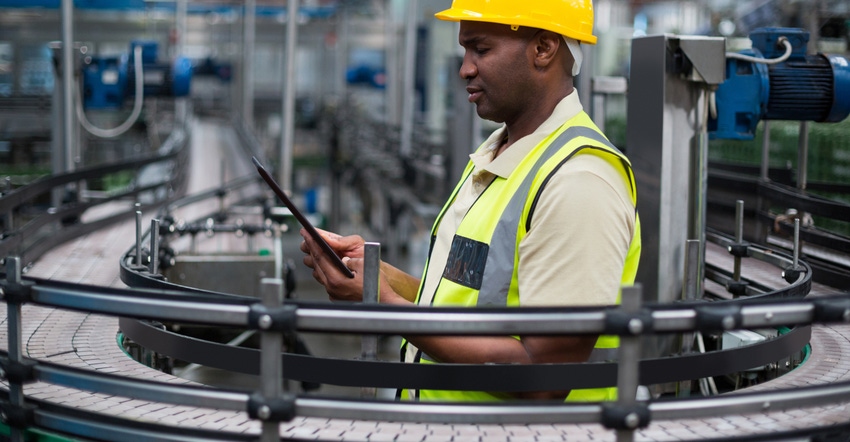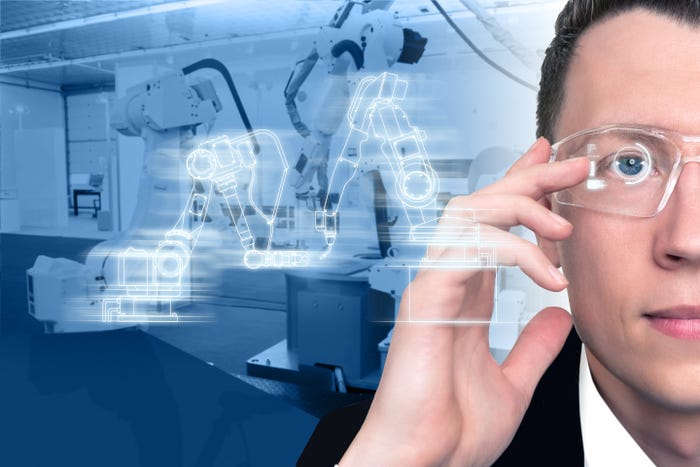4 Ways Digital Technologies Revolutionize Packaging Design and Processes
Leveraging augmented reality (AR), virtual reality (VR), and digital twin technologies allows for more efficient packaging designs and collaboration between customers and OEMs.

If anything good came out of the pandemic for the manufacturing sector, it was how it forced all of us to find inventive ways to continue our operations, maintain our productivity, and ensure the safety of all of our employees. It has also acted as a catalyst for innovative technologies like augmented reality (AR), virtual reality (VR), and digital twins.
Over the past few years, these technologies have revolutionized packaging design and processing, opening new avenues for increased efficiency, enhanced creativity, and improved collaboration between customers and Original Equipment Manufacturers (OEMs).
Let’s take a deeper dive into the benefits of each of these technologies and see how they are enhancing the packaging industry and collaborations between customers and OEMs.
1. Enhanced training programs, education, and standardization of instructions.
Packaging manufacturers can enhance training programs, virtual educational simulations, and standardize work instructions by harnessing AR and VR technologies.
Virtual training environments improve how employees are trained. Operators and technicians learn how to handle packaging machinery, follow safety protocols, and troubleshoot potential problems without any unneeded risks. This empowers the workforce with the necessary hands-on skills, leading to improved efficiency and reduced operational errors.
Factory floors are transformed with the overlay of technical information on machinery that provides companies data around process and production flow, as well as predictive and preventive maintenance. This cuts back on errors that could lead to machine downtime or potential injuries.
Digital work instructions are making it easier for businesses to standardize their operations and ensure the information is the same at every workstation — reducing time, mistakes, and cognitive load on their workers. Another benefit for digital work instructions is access to them in multiple languages at the press of a button.
2. Package design innovations and rapid iterations.
Packaging designers can utilize AR and VR technologies to create virtual prototypes and 3D models of their designs. This immersive experience enables them to evaluate packaging concepts in a simulated real-world environment, gaining valuable insights into the product’s appearance, functionality, and user experience. This reduces the time and resources spent on physical prototyping, allowing for more rapid iterations and innovations of their designs.
VR and AR also allow the visualization and fine-tuning of packaging concepts, enhancing creativity, reducing costs, and accelerating the development process. Designers can consider what a product will look and feel like — and make any changes before creating a physical version of it that could cost time and money.
Integrating digital twins in packaging design allows for constant monitoring of a package’s performance and behavior throughout its lifecycle. Designers can use real-time data and analytics to optimize their designs — for better durability, sustainability, and cost-effectiveness — that meet customer expectations.
3. Real-world testing, validation, and quality assurance.
AR and VR simulations combined with digital twin technology allow for realistic testing of packaging designs under various conditions. Manufacturers and customers can virtually simulate the handling, transportation, and storage of products. They can also identify potential flaws and vulnerabilities before moving to production. This results in fewer design flaws, minimized wastage, and ultimately, cost savings.
AR-guided solutions can also incorporate quick inspections within the digital work instructions at any step without hindering cycle time. Each inspection is immediately documented, helping to catch potential errors sooner than later.
Manufacturers can use the data to assess their processes and figure out where improvements need to be made. This information can be shared across the company and with stakeholders and partners.
4. Enhanced collaboration between customers and OEMs and workforce.
Collaboration between customers, OEMs, and workforce have all been improved through the use of AR, VR, and digital twin technologies. They all break down geographical barriers, enabling seamless communication and collaboration regardless of location.

Through the use of wearable devices, workers can now digitally interact with equipment and machinery. Off-site engineers can communicate with on-site operators to resolve any mechanical issues quickly and efficiently.
Through interactive virtual meetings and design sessions, stakeholders can explore packaging concepts together, share ideas, and make real-time adjustments. Customers can virtually interact with 3D visualizations of products. Companies can then facilitate a dynamic feedback loop that fosters creativity and ensures final designs meet all requirements and expectations.
Furthermore, AR can be used in marketing and sales efforts, creating interactive experiences for consumers and increasing engagement. Customers can virtually try out products and see how they work, leading to a better understanding of the product’s value and increasing the likelihood of making a purchase.
As this technology continues to advance, we can expect greater strides in sustainable packaging solutions and a more connected global packaging industry. Embracing AR/VR and digital twin technologies is not merely a trend, but a transformative force that will shape the future of packaging design for years to come.
About the Author(s)
You May Also Like


